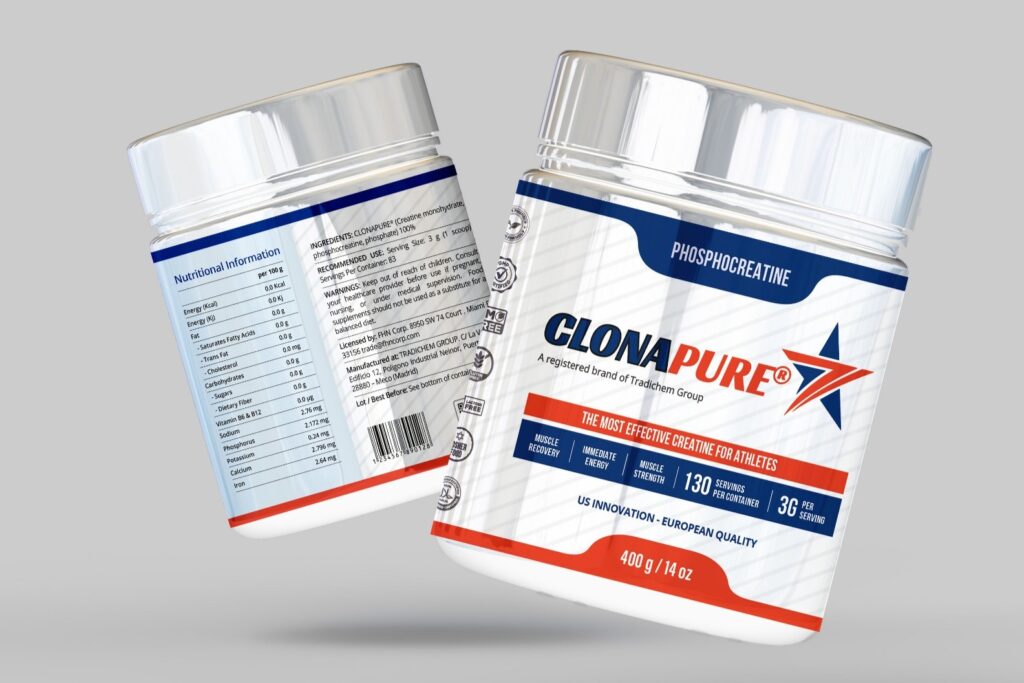As time goes by and the demand for nutritional supplementation increases year after year, many people find themselves wondering about the reasons behind such ever-growing demand. The popularity of the physical training and fitness sector are beyond any doubt, and it brings about a wide range of supplements to help people make the most of their training sessions.
One of the spearheads of this market is, undoubtedly, creatine. It has proven itself the top choice for a significant number of athletes and casuals for many years now. Moreover, it is the most widely studied and scientifically backed of the lot, which more than justifies its prestige and popularity.
However, in today’s blog we will focus on the lesser-known concept that makes creatine as effective as it is – phosphocreatine, its active form.
Enter THE MAGIC OF PHOSPHOCREATINE!

A BRIEFING ON CREATINE
As we have out stated, creatine is one of the safest and most effective supplements available, known for its benefits in athletic performance and overall health. It helps your body enhance muscle performance and growth, while also boosting strength, power, and muscle mass. Additionally, it plays a part in reducing soreness and fatigue after workout.
Furthermore, creatine can also be beneficial for brain function, enhancing mental alertness, concentration, and memory, according to science.
Now that the basics are clear, let’s delve deeper into the core of our article today. What exactly is phosphocreatine, and what makes it special?
WHAT IS PHOSPHOCREATINE AGAIN?
Great question! Even if you are not familiar with the concept you probably have enjoyed its properties already. Long story short, phosphocreatine is the active form of creatine found mainly in the skeletal muscles of invertebrates – and can also be obtained through certain foods, such as raw meat.

WHAT MAKES PHOSPHOCREATINE SO IMPORTANT?
Phosphocreatine plays a crucial role in our muscular system, primarily by facilitating the production of a vital chemical known as adenosine triphosphate (ATP). This molecule is essential for driving muscle contractions and enabling our physical activities.
During high-intensity exercises, such as powerlifting or sprinting, muscles rely heavily on phosphocreatine in the initial seconds of exertion. This reliance is critical because it provides an immediate source of energy, allowing athletes to achieve maximum effort right from the start of their performance.
While aerobic contractions depend on oxygen to generate energy, the process involving phosphocreatine operates anaerobically. This means that energy is produced without the presence of oxygen, making it particularly effective during short bursts of intense activity.
To put this into numbers, let’s say that anaerobic contractions are characterized by performance at a heart rate of 80% to 90% of an individual’s maximum. At this rate, oxygen demand quickly surpasses the available supply. In these moments of extreme effort, the body turns to alternative energy sources, with phosphocreatine stepping in to power those explosive contractions.
This mechanism underscores the importance of phosphocreatine, not just in athletic performance, but also in any situation that requires rapid and forceful muscular engagement.

THAT SOUNDS GREAT! WHAT ELSE IS IN
STORE THEN?
Aside from the rapid energy supply during high-intensity, short-duration physical activities we have just described (and about which you can learn more here), phosphocreatine has several other benefits that can be summed up as follows:
ENHANCED ATHLETIC PERFORMANCE
By augmenting the capacity for executing brief, intense exercise bursts, phosphocreatine plays a crucial role in athletic training. Athletes who engage in sports that demand explosive power can significantly enhance their performance levels, allowing them to push beyond their previous limits.
INCREASED MUSCLE STRENGTH AND POWER
Phosphocreatine’s acceleration of the resynthesis of ATP enables muscles to exert greater force while optimizing recovery times between successive efforts. This translates into greater strength gains during resistance training sessions, leading to better overall muscle development and performance.

DELAYED FATIGUE
By sustaining appropriate ATP levels within the body, phosphocreatine delays the onset of fatigue during high-intensity workouts. This way, it empowers athletes to maintain their performance at a high level for longer periods, providing a competitive edge in demanding physical environments.
FASTER RECOVERY
Phosphocreatine enhances the speed at which ATP is replenished between bouts of intense activity, facilitating quicker recovery periods. Due to this reduced recovery time between sets or sprint efforts, you can significantly elevate the quality and intensity of your training sessions.
CELLULAR HEALTH SUPPORT
Phosphocreatine is also vital for maintaining cellular energy balance, particularly under stress conditions that threaten cellular integrity. By aiding in the preservation of muscle integrity and function, especially as individuals age, it promotes better physical performance but may also contribute to overall longevity and vitality.

WHAT ABOUT CREATINE MONOHYDRATE AND PHOSPHOCREATINE?
That is a very pertinent question indeed!
Creatine monohydrate is basically creatine with one molecule of water attached to it. By weight, it is usually around 88-90 percent creatine. In a way, creatine monohydrate is essential as it transforms into phosphocreatine, which is vital for energy metabolism during exercise.
When your body needs to generate ATP for quick muscle contractions, it borrows a phosphate from phosphocreatine and combines it with compound ADP. ATP production from other sources, like glucose and fats, kicks in only after phosphocreatine stores are depleted.
so... which one works better?
That may seem like a difficult question to answer at first sight. However, science has just provided an answer to such dilemma.
According to a very recent study which analyzed the effects of creatine monohydrate and phosphocreatine regarding ATP production, the increase in intracellular ATP levels induced by the addition of phosphocreatine to creatine monohydrate was 10% higher than just the combination of the caused by creatine monohydrate and glucose. This proves that the addition of phosphocreatine triggers the intracellular ATP production cascade more efficiently in muscle cells.

a quick conclusion
So far, we have firmly established “the magic of phoshocreatine” and its crucial role in facilitating the production of adenosine triphosphate (ATP), basic to enable our physical performance. Now, let’s also remember that science has proven that including phosphocreatine in a formula with creatine monohydrate increases its efficiency in augmenting ATP levels.
For instance, Clonapure® presents a unique formulation to provide your muscles with a swift infusion of energy. Produced within a state-of-the-art, GMP-certified facility, Clonapure® upholds a solid commitment to purity and quality, rigorously verified through comprehensive HPLC testing protocols.
Are you ready to unlock the benefits that Clonapure® has to offer?




